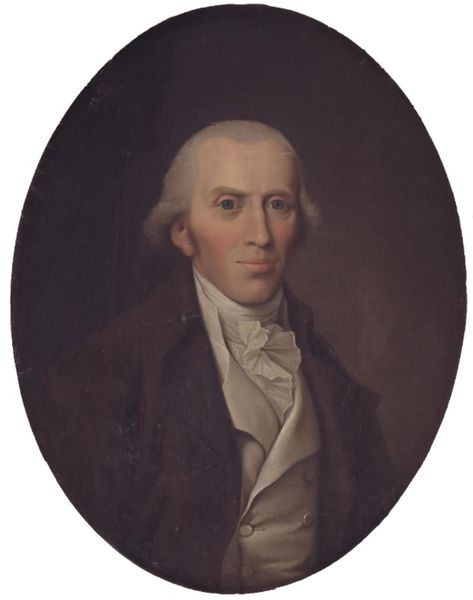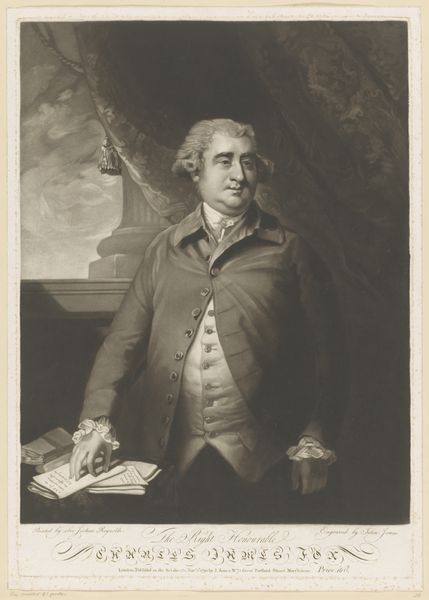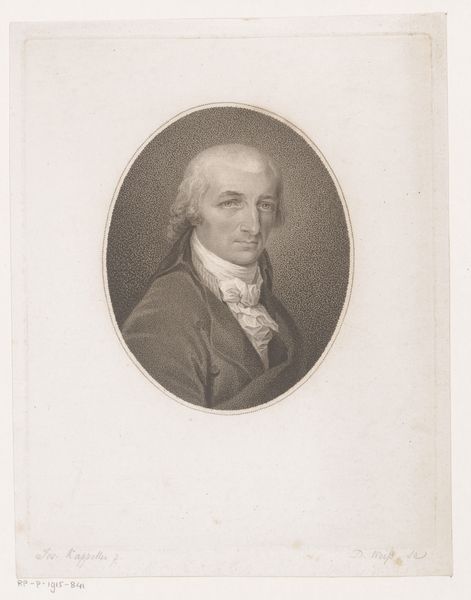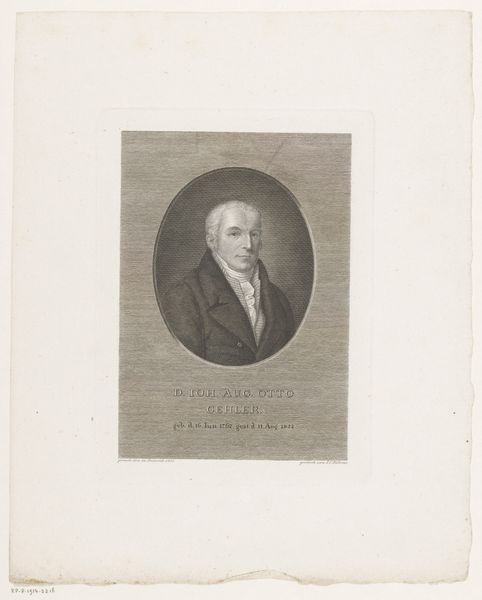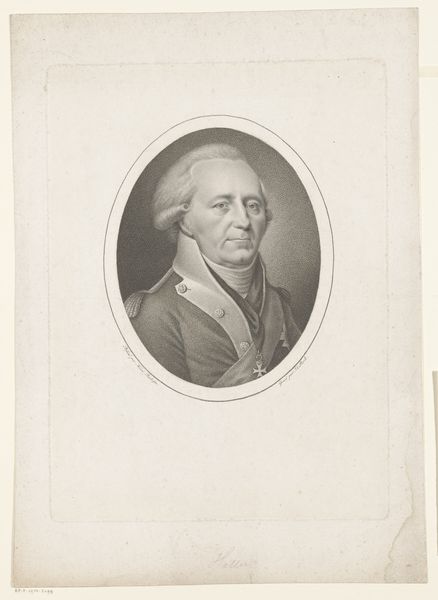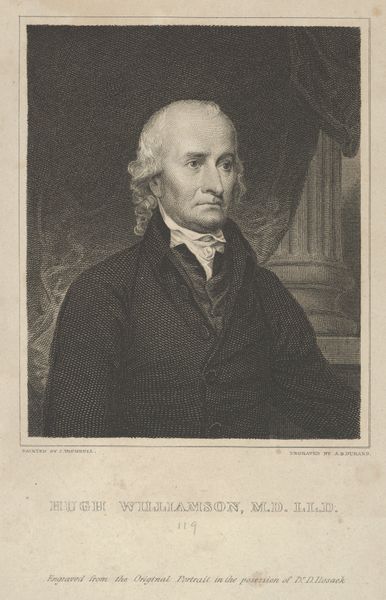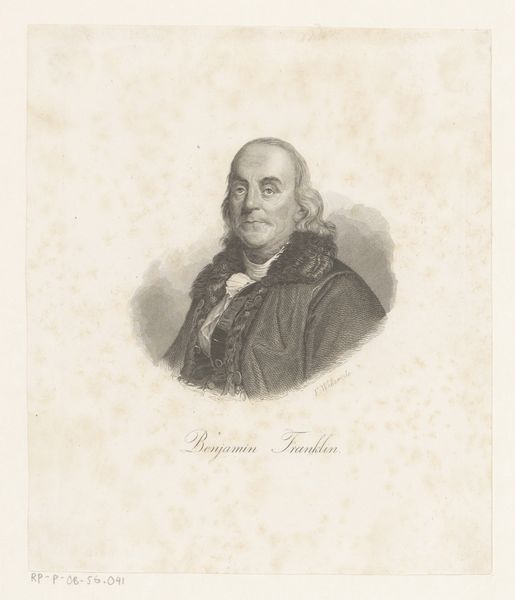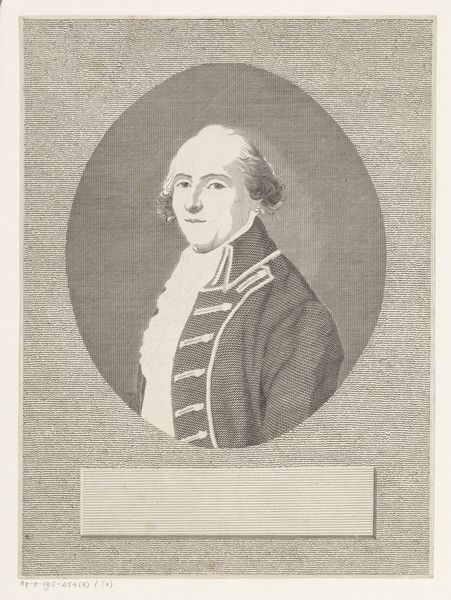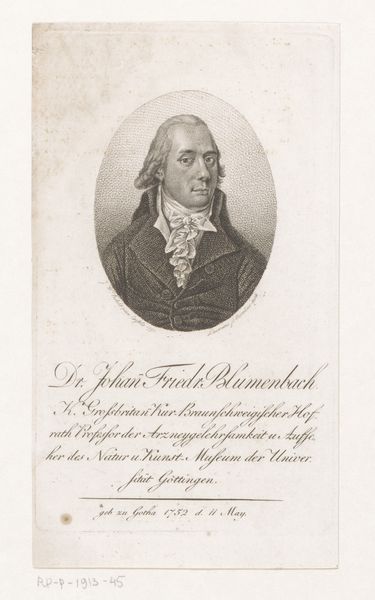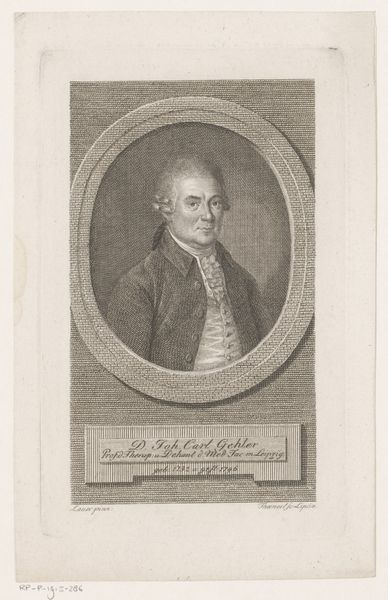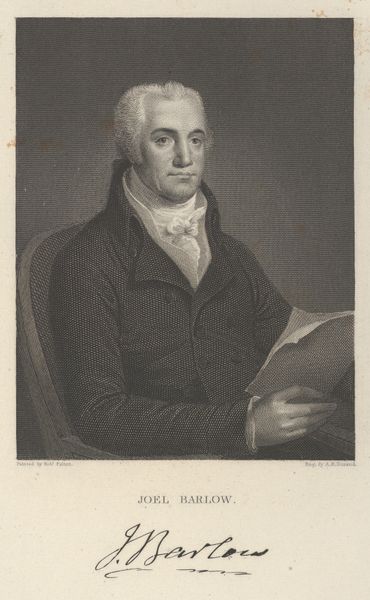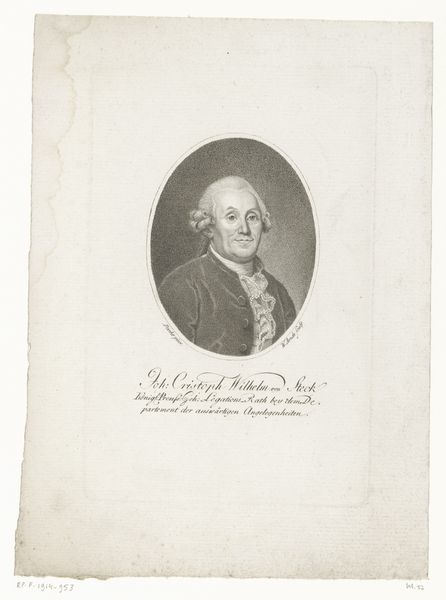
drawing, pencil, graphite, charcoal
#
portrait
#
pencil drawn
#
drawing
#
neoclacissism
#
pencil sketch
#
charcoal drawing
#
historical photography
#
pencil drawing
#
pencil
#
graphite
#
portrait drawing
#
charcoal
Dimensions: height 455 mm, width 345 mm
Copyright: Rijks Museum: Open Domain
Editor: So, this is the "Portret van Friedrich von Matthisson," made in 1801. It's a drawing by Wilhelm Arndt, using pencil and charcoal. It strikes me as very formal, a picture of a distinguished man ready to judge some matter. What do you see in this piece that I might be missing? Curator: The formality you observe is intentional and reflects the Neoclassical style popular at the time. Consider the context: portraiture, especially drawings like this, served a crucial public role. It was a way of constructing and disseminating an image, and status of an individual, shaping public perception. Think about who had access to such portraits – they weren't mass-produced like photographs are today. Who was Matthisson, and why might Arndt have chosen to portray him this way? Editor: Ah, that’s a good point. I'm assuming Matthisson was someone important? And the way he is depicted served to cement that status? Curator: Precisely. Investigating Matthisson reveals he was a prominent poet. Arndt's choice of a monochrome drawing, and the Neoclassical style itself, deliberately echoes classical antiquity, imbuing Matthisson with a sense of timeless intellectual and moral authority. What impact might such representation have had on how people viewed Matthisson and his work? How does it contribute to the social and cultural hierarchy? Editor: So, it's not just a portrait; it's a statement about his role in society, created and reinforced through visual language. Interesting! I never considered that it's doing cultural work. Curator: Exactly! And think about the museum's role in displaying this portrait today. How does placing it on display impact our understanding of both Matthisson and the art of portraiture in the early 19th century? Does it perpetuate or challenge the original intentions behind its creation? Editor: Wow, that really shifts my perspective. It is not enough to consider the style or even the sitter, it’s also the place in society and history it all inhabits. Curator: Exactly, and understanding that gives a much deeper insight to what the art meant, means, and can mean!
Comments
No comments
Be the first to comment and join the conversation on the ultimate creative platform.

